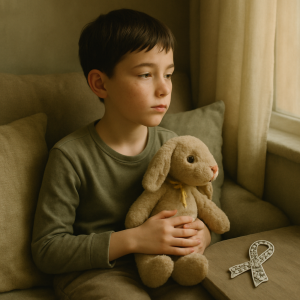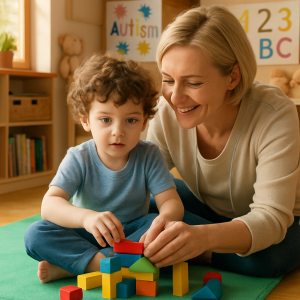🧩 Understanding Autism Therapy for Children
Autism awareness in children is essential for building inclusive, supportive environments. This image captures a quiet and emotional moment of an autistic boy sitting by a window, holding a soft toy. The scene reflects the sensory sensitivity and emotional depth often seen in children on the autism spectrum. With the right therapy, many children show significant improvement in their ability to connect with others and participate in everyday activities.
Therapies are often personalized based on each child’s needs. Whether it’s speech therapy, occupational therapy, or behavioral programs like ABA (Applied Behavior Analysis), the goal is always to support development in a nurturing and structured environment. These therapies empower children to become more independent and confident.
🧸 The Power of Play-Based Intervention
One of the most effective ways to support children with autism is through play-based therapy. This approach creates a relaxed and engaging environment where children feel safe to explore, express emotions, and develop new skills. Activities such as building with blocks, puzzles, or role-playing games help stimulate communication and emotional growth.
Therapists use play not just for entertainment, but as a strategic tool to reach developmental milestones. It enhances sensory processing, encourages eye contact, and improves focus and understanding. Over time, children learn how to interpret social cues, manage behaviors, and build stronger bonds with family and peers.

🧠 Long-Term Benefits For and Support for Families
Autism therapy for children is not just about short-term improvements—it provides lifelong benefits. Children who receive early and consistent therapy often achieve better outcomes in school, social settings, and overall emotional health. Families also benefit, as therapy offers guidance, coping strategies, and hope for a brighter future.
Support doesn’t end with therapy sessions. Many programs include family counseling, parent training, and community integration to ensure that children thrive beyond the clinic. When families, therapists, and educators work together, children with autism can reach their full potential and lead fulfilling, joyful lives.

